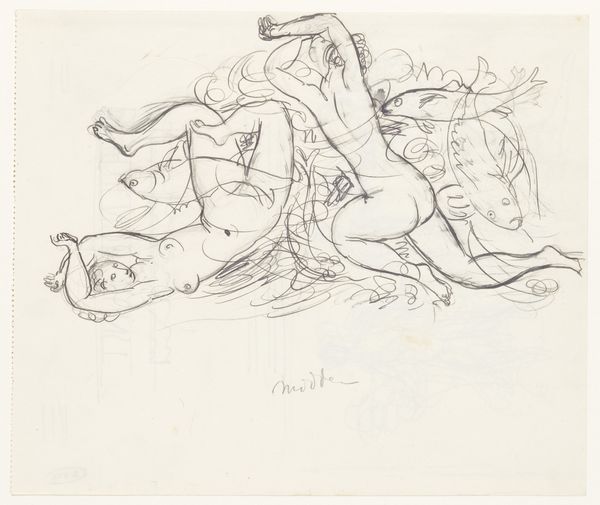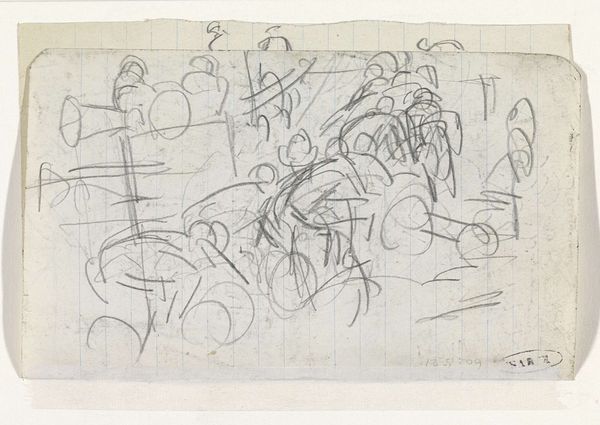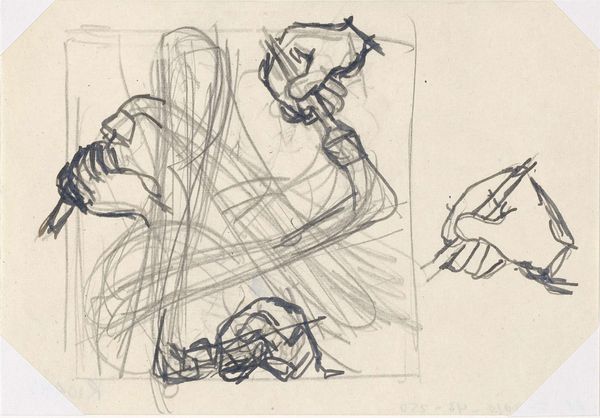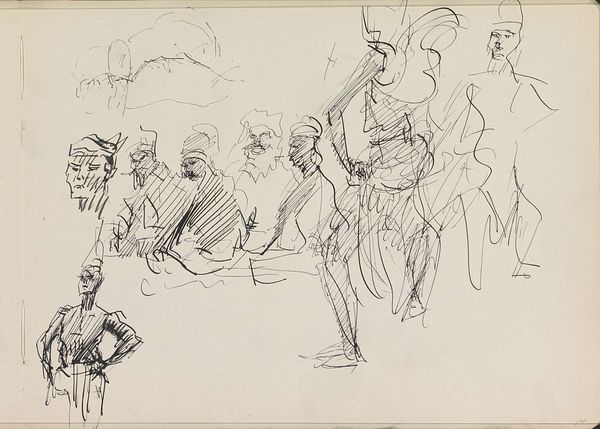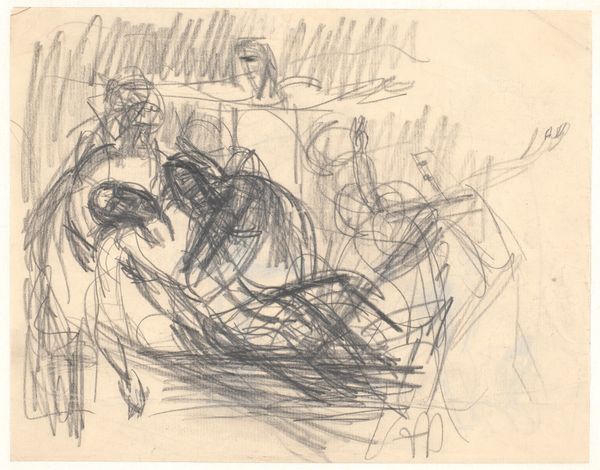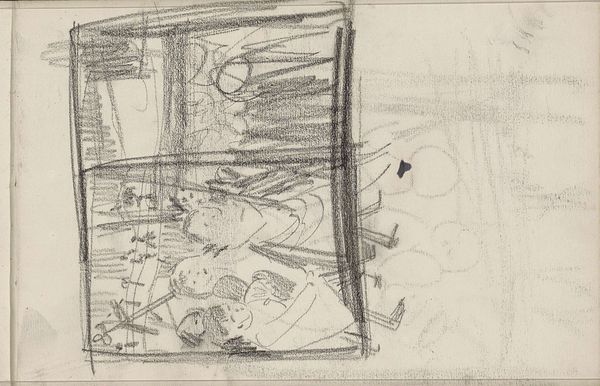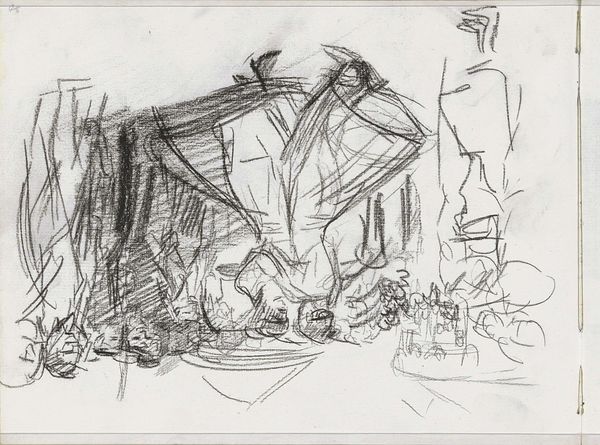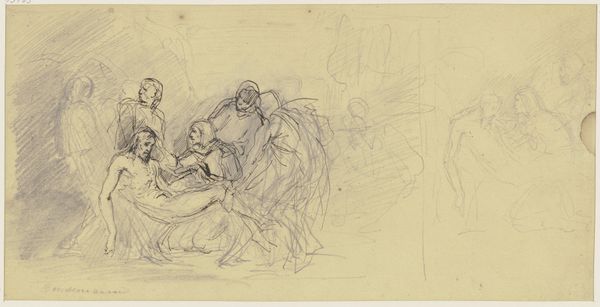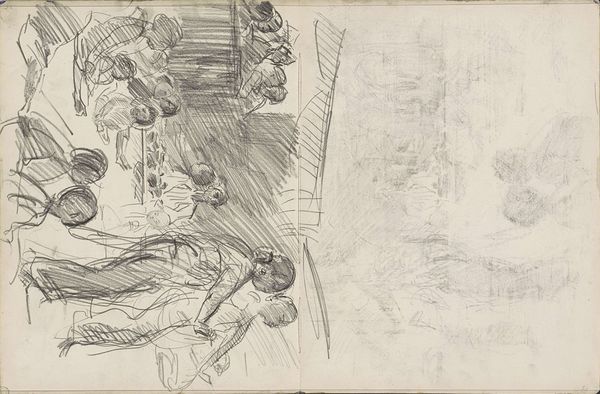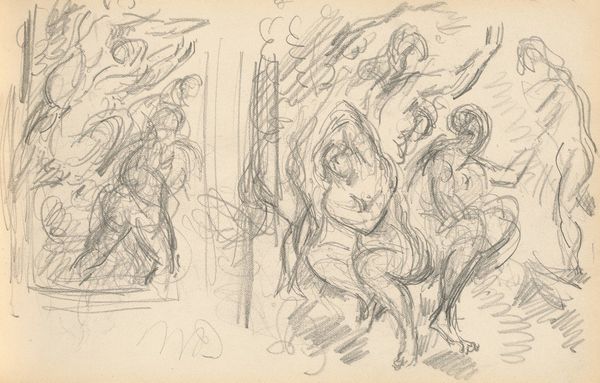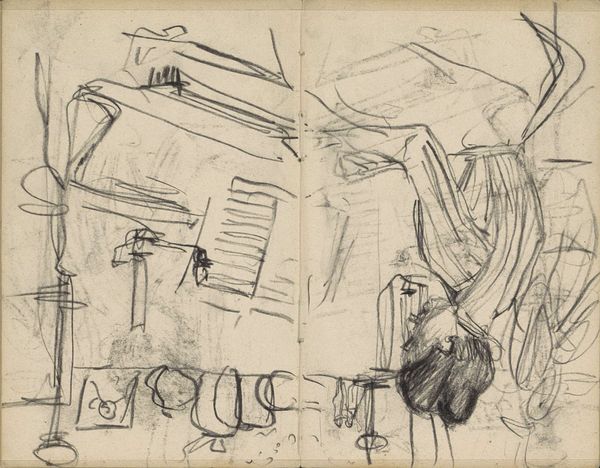
drawing, pencil
#
drawing
#
comic strip sketch
#
figuration
#
personal sketchbook
#
linework heavy
#
idea generation sketch
#
sketchwork
#
ink drawing experimentation
#
sketch
#
pen-ink sketch
#
pencil
#
expressionism
#
sketchbook drawing
#
storyboard and sketchbook work
#
nude
#
initial sketch
Dimensions: height 210 mm, width 260 mm
Copyright: Rijks Museum: Open Domain
Editor: This sketch, "Naakte vrouwen, zwemmend," by Leo Gestel, likely made sometime between 1891 and 1941, strikes me as an exercise in capturing movement. The figures seem to blend together almost abstractly. What is your perspective on the meaning behind this sketch? Curator: Considering the time frame, this drawing presents an interesting engagement with the nude form within a shifting cultural landscape. How might the role of the "nude" as a traditional subject in academic art be challenged or reinterpreted during the late 19th and early 20th centuries? What sociopolitical considerations would allow for the development of expressionism at this time? Editor: Well, I suppose Expressionism might represent a move away from idealized beauty standards and academic conventions, offering more personal interpretations of the human body? Curator: Exactly. And we should think about Gestel’s likely exposure to various avant-garde movements through the Amsterdam art scene. These rapid sketches – look at the heavy linework, almost frantic – hint at a rejection of classical artistic values but is also related to social changes. Does this speak to ideas around the shifting status of women in this era and how the female body might be presented within these historical moments? Editor: That makes sense. It seems less about idealized form and more about capturing fleeting impressions, a very personal vision... Almost as if the act of observing is being prioritised. Curator: Precisely! I would add that Gestel gives us a glimpse into his artistic process, perhaps even challenging the notion of the ‘finished’ artwork. The sketches can show the human thought process behind creation. It’s less about technical perfection and more about capturing raw emotion and ideas. This focus allows for the development of individual expressionism that breaks traditional moulds of subject and theme, thus inviting others to join in. Editor: It’s fascinating how much context influences our interpretation of such a simple sketch! I've really started to value unfinished works as little gems of society, because the history is written so raw. Curator: Indeed. Appreciating art is understanding its dialogue with history.
Comments
No comments
Be the first to comment and join the conversation on the ultimate creative platform.
